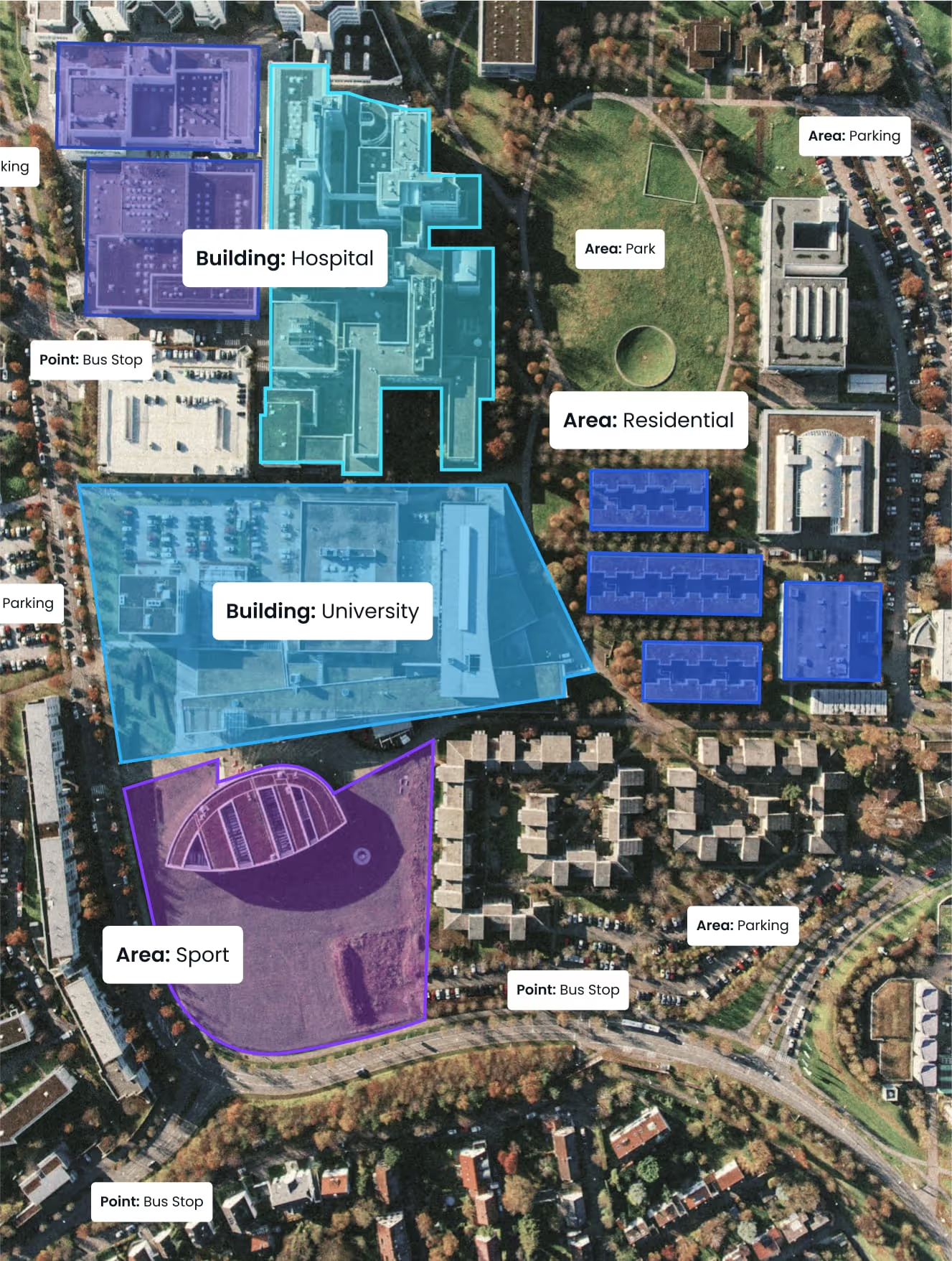🧬 Introduction: Why Synthetic Data Is Gaining Momentum in Medical AI
Medical imaging is the backbone of diagnostics, from MRIs and CT scans to pathology slides and ultrasounds. For AI systems to interpret these images reliably, they must be trained on large-scale, high-quality annotated datasets. Unfortunately, obtaining such datasets presents major challenges: strict patient privacy laws (like HIPAA or GDPR), the scarcity of rare disease cases, and the enormous cost of manual annotation by domain experts.
Enter synthetic data—artificially generated datasets that simulate real medical images with astonishing fidelity. From GAN-generated MRIs to simulated histopathology slides, synthetic data is now seen as a viable and sometimes superior alternative for model training.
This article dives deep into this transformative approach—its key benefits, use cases, challenges, and ethical implications—to help AI professionals make informed decisions in healthcare innovation.
🔍 What Is Synthetic Data in Medical Imaging?
In the realm of medical AI, synthetic data refers to artificially generated medical images or datasets that mimic real-world clinical data. Unlike traditional datasets obtained through hospitals, clinical trials, or PACS systems, synthetic data is not captured from real patients but is instead created using algorithmic models, simulations, or procedural generation tools.
This data can replicate everything from the subtle textures of a brain MRI scan to the pixel-level complexity of histopathological slides. In practice, synthetic data serves either as a supplement or—more recently—as a substitute for real medical data when developing AI algorithms.
🧠 Why It Matters
In medical imaging, annotated data is both scarce and expensive. Most medical data is protected under strict privacy laws (e.g., HIPAA in the U.S., GDPR in Europe), and accessing or labeling it often requires collaboration with hospitals, ethics approvals, and domain experts like radiologists or pathologists.
Synthetic data offers a clean slate—one that bypasses many of the ethical, legal, and logistical barriers associated with real patient data.
🧪 How Is Synthetic Medical Data Created?
There are several ways synthetic medical images are generated:
1. Generative Adversarial Networks (GANs)
GANs are a class of deep learning models where two neural networks—the generator and the discriminator—compete against each other. In medical imaging, GANs can create high-fidelity, realistic images like synthetic MRIs, CT scans, or dermatology photos.
- Example: A GAN can generate a synthetic brain MRI of a tumor-bearing region by learning the visual features from real MRIs.
2. Physics-Based Simulation
Used commonly in ultrasound or X-ray imaging, physics engines simulate how sound or radiation interacts with virtual human tissues to produce realistic, modality-specific images.
- Example: Ultrasound simulators model how sound waves reflect off tissues of varying densities.
3. 3D Rendering and Anatomical Modeling
Using 3D anatomical models and rendering engines (like Blender or Unreal Engine), developers can generate detailed synthetic views of organs, surgical scenes, or procedures—frame by frame.
- Example: Simulating a laparoscopic surgery for training both surgeons and AI object detection models.
4. Style Transfer and Domain Adaptation
These techniques involve transforming real images into another style or modality. For instance, converting a CT scan into a PET-like appearance using neural style transfer.
- Example: Turning MRI brain scans from one imaging protocol to another (e.g., T1 to T2-weighted) for multi-modality AI training.
5. Programmatic Labeling and Procedural Generation
Instead of manually labeling thousands of images, synthetic datasets can be created with automatic labels embedded at generation time.
- Example: Generating 10,000 variations of chest X-rays with labeled pneumonia zones, artifacts, or anatomical anomalies.
📦 Types of Synthetic Data in Medical AI
✅ Fully Synthetic Data
- Entirely generated from scratch.
- No dependence on real patient data.
- Useful for training models in early R&D or simulation environments.
⚗️ Hybrid Synthetic Data
- Combines real data with synthetic overlays or transformations.
- Often used to enrich datasets with specific pathologies or imaging variations.
🔄 Augmented Synthetic Data
- Applies transformations like rotation, scaling, brightness adjustment, or noise injection to real images to simulate variability.
- Technically a form of data augmentation but often grouped with synthetic workflows.
🌟 Key Benefits of Using Synthetic Data for Medical Image Segmentation
1. Scalability with Zero Privacy Concerns
Unlike real patient data, synthetic datasets can be generated in virtually unlimited quantities. No consent, no de-identification, no storage restrictions.
✅ No HIPAA or GDPR bottlenecks.
2. Augmenting Rare Disease Datasets
Training a model to detect rare cancers? Chances are you'll never gather enough real-world examples. Synthetic data helps fill these crucial gaps.
3. Cost-Effective Annotation
Manual annotation in medical domains can cost thousands of dollars per dataset due to radiologist or pathologist involvement. Synthetic data can be auto-labeled during generation.
4. Domain Control
Need a dataset with a specific imaging protocol, angle, or demographic? Synthetic generation lets you define those parameters.
5. Improved Model Generalization
Training solely on a limited set of real data can lead to overfitting. Synthetic data helps build more robust, generalizable AI models.
6. Facilitates Pretraining and Transfer Learning
Synthetic data can be used for self-supervised learning or model pretraining before finetuning on real clinical datasets.
🏥 Real-World Use Cases of Synthetic Data in Medical Image Annotation
🧠 1. Brain Imaging (MRI)
Using GANs, researchers have simulated high-resolution 3D MRIs to detect lesions, tumors, and structural anomalies.
- Example: NVIDIA’s Clara AI has demonstrated synthetic brain MRI generation with automatic annotations.
🩸 2. Histopathology
Generating synthetic slides of tissue samples allows models to train on cancer detection (e.g., breast, prostate, colon) without real biopsies.
- Pathology GANs can mimic the staining and artifact patterns seen in real-world histology.
👁 3. Ophthalmology
Simulated retinal fundus images are helping train AI to detect diabetic retinopathy, glaucoma, and age-related macular degeneration.
- Tools like RetFound have used both real and synthetic retinal scans.
🫁 4. COVID-19 and Lung CT
During the pandemic, synthetic chest CT images enabled quick development of COVID-detection models when real datasets were limited or incomplete.
- Synthetic imaging was critical in overcoming the early-stage data bottleneck.
🧒 5. Pediatric Imaging
Due to ethical and legal constraints, children’s medical imaging data is extremely limited. Synthetic generation helps address this imbalance.
⚕️ 6. Surgical Simulation and Training
High-fidelity, synthetic 3D surgical environments are now used both for AI annotation and surgeon training in augmented reality environments.
⚠️ Risks and Limitations of Synthetic Medical Data
While promising, synthetic data is not without drawbacks. Here are the critical challenges to consider:
1. Domain Shift and Poor Real-World Transferability
AI models trained on synthetic data may perform poorly when exposed to real clinical environments due to unseen imaging noise, artifacts, or device variance.
🔄 Solution: Use hybrid datasets that combine synthetic + real-world validation.
2. Synthetic Bias
If the synthetic generator (GAN, simulation engine) is biased, the resulting data will be too—leading to misdiagnosis risks or false negatives.
3. Lack of Clinical Trust and Regulatory Acceptance
Clinicians and regulatory bodies like the FDA or EMA remain skeptical of models trained exclusively on synthetic data. Validation on real-world cases is still mandatory.
4. Resource-Intensive Generation
High-fidelity synthetic data generation—especially 3D or GAN-based models—requires substantial computational resources and expertise.
5. Legal and IP Concerns
Who owns synthetic data? If it's generated from real clinical templates, are there copyright or hospital IP implications?
🔬 Evaluating the Quality of Synthetic Medical Data
Not all synthetic data is created equal. Evaluation is key.
Metrics to Consider:
- FID Score (Fréchet Inception Distance): Measures similarity to real data.
- SSIM (Structural Similarity Index): Evaluates visual similarity.
- Domain expert reviews: Radiologist or pathologist scoring.
- Model performance metrics: Validation on real datasets.
🔍 Pro tip: Always validate on real-world test sets even if training is synthetic-heavy.
🧪 Emerging Trends in Synthetic Medical Data
1. Diffusion Models for Medical Imaging
Following the success of DALL·E and Midjourney in general image generation, diffusion models are now being applied to create more realistic medical imagery.
2. Synthetic-First AI Startups
Companies like Synthea and Medical Data Works are embracing synthetic data-first approaches for product development and clinical simulation.
3. Synthetic Twin Datasets
Generating a synthetic twin of a hospital’s imaging archive for simulation, research, or model evaluation without breaching privacy.
4. Cross-Modality Generation
Creating synthetic PET scans from CT or generating ultrasound from MRI to train multi-modal fusion AI models.
5. Federated Synthetic Data Sharing
Combining federated learning with synthetic generation allows hospitals to collaborate without sharing real data.
🧰 Tools and Platforms for Generating Synthetic Medical Data
Open-Source:
Commercial:
🧭 Best Practices for Integrating Synthetic Data into AI Pipelines
- Start with real data, enrich with synthetic.
- Use domain experts to evaluate visual realism.
- Mix and match modalities to train robust models.
- Document your synthetic generation pipeline for transparency.
- Always validate models on real-world test sets.
📜 Regulatory Landscape: What’s Allowed and What’s Not?
Europe (GDPR)
- Synthetic data is not considered personal data, but if generated from identifiable base data, it might fall under scrutiny.
USA (HIPAA)
- Synthetic data is not protected health information (PHI), making it easier to use in commercial AI products.
FDA & EMA
- Still require validation on real-world patient data. Synthetic data alone is not enough for clinical approval.
🔄 Synthetic Data vs. Data Augmentation vs. De-Identification
- Synthetic Data
Artificially generated data used to simulate real medical scenarios for model training.
🔒 Privacy Risk: ✅ None — no real patient data involved, so it's inherently privacy-safe
📈 Scalability: ✅ High — can be generated in large volumes to match use case needs
⚖️ Bias Introduction Risk: ⚠️ Medium — risk depends on how well the synthetic data reflects real-world diversity
📜 Regulatory Simplicity: ✅ Generally simple — often easier to deploy since it's not tied to patient identity
- Data Augmentation
Technique that applies transformations (e.g., rotation, flipping, noise) to real medical images to expand training datasets.
🔒 Privacy Risk: ⚠️ Medium — source data still contains PHI (Protected Health Information), though it's harder to trace
📈 Scalability: ✅ High — can be applied systematically to existing datasets
⚖️ Bias Introduction Risk: ⚠️ Medium — overuse or poor augmentation strategies may reinforce dataset biases
📜 Regulatory Simplicity: ⚠️ Varies — depends on how the base data was collected and processed
- De-Identification
Removal of personally identifiable information (PII/PHI) from real patient datasets to meet privacy standards.
🔒 Privacy Risk: ⚠️ Medium — not always foolproof, especially with imaging metadata or rare cases
📈 Scalability: ❌ Limited — requires manual oversight and verification, especially for sensitive data
⚖️ Bias Introduction Risk: ✅ Low — retains the true structure of real-world medical data
📜 Regulatory Simplicity: ❌ Complex — subject to strict HIPAA/GDPR compliance and institutional review
📈 Case Study: Breast Cancer Detection with Synthetic Histology Images
A collaboration between Stanford Medicine and Google Health trained a deep learning model on synthetic breast tissue slides. When validated on real data, the model achieved 93% sensitivity, comparable to models trained on real-world samples—at a fraction of the cost.
This paved the way for a low-cost screening tool deployable in regions lacking access to histopathology labs.
✅ Key Takeaways
- Synthetic data offers scalability, safety, and cost-efficiency—especially where real data is scarce or sensitive.
- Risks like domain shift and bias must be addressed through hybrid training, evaluation metrics, and expert review.
- Synthetic data will not fully replace real data, but it's a powerful complement—especially during early AI development or pretraining.
- Regulatory and ethical clarity is evolving, but adoption is accelerating.
📣 Contact us
Are you building AI solutions in medical imaging?
At DataVLab, we offer expert annotation services, custom synthetic dataset generation, and consulting for hybrid AI pipelines in radiology, pathology, ophthalmology, and more.
👉 Let’s accelerate your AI model’s development—safely, scalably, and ethically.
Contact us today to start a synthetic data consultation.





